

The Indian caste system has been in use for many years. Still today the values of the caste system are held strongly. It has kept a sense of order, and peace among the people. There are five different levels of the system: Brahman, Kshatriya, Vaishya, Shudra, and Harijans. Within each of these categories are the actual "castes" or jatis within which people are born, marry, and die. They all have their own place among each other and accept that it is the way to keep society from disintegrating to chaos. This system has worked well for Indian people and still has a major role in modern India.
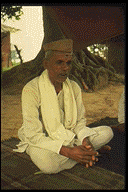 Brahman - priest
Brahman - priest
Kshatriya
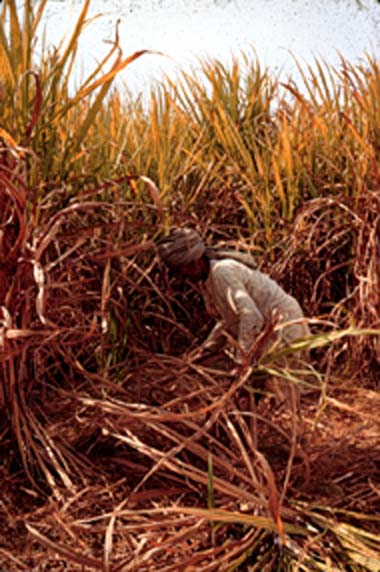
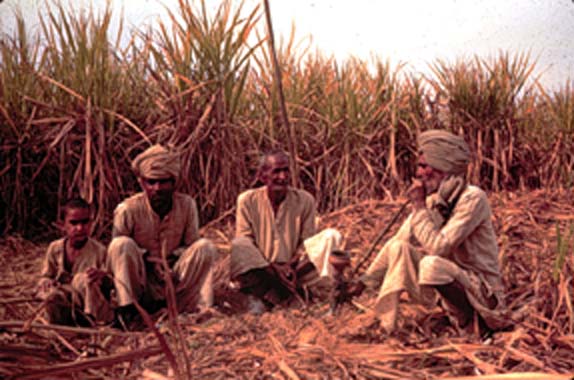
| This Rajput landowner is harvesting his crops. He is a member of the caste Kshatriyas, which is right below the Brahmans. He is important to the community because he is the main source of food. He also is a protector. | Here is a Rajput and his family on their land. He is smoking a hooka, or water pipe. He is a member of the caste Kshatriyas, which is right below the Brahmans. He is important to the community because he is a farmer and is a main source of food. |
Vaishya
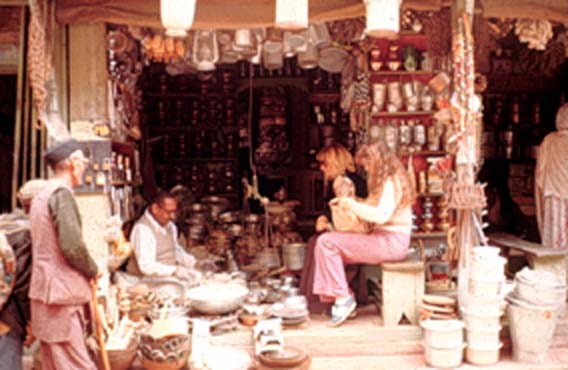
This shopkeeper is a Vaishya.
The Vaishya caste are
shopkeeper and sell products, unlike the Shudra who sell services. In this very
specialized shop above, the merchant sells nothing but aluminum pots. For brass
or stainless steel, you'll have to go somewhere else.
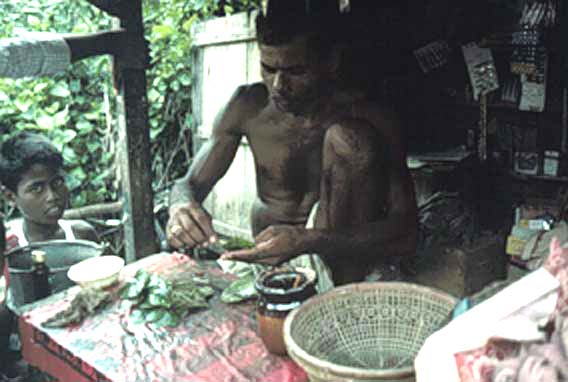
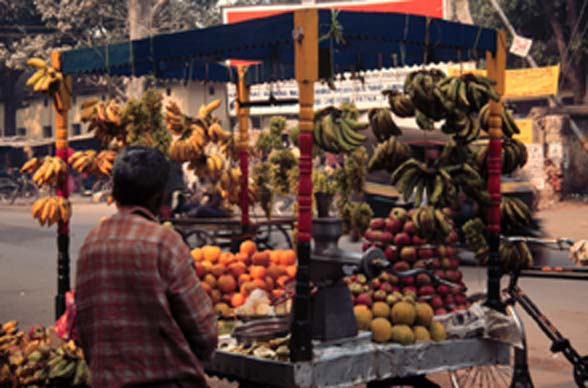
| The
Paan Maker is part of the Vaishya caste. The Vaishya caste are shopkeeper
and sell products, unlike the Shudra who sell services. Paan is a type of chew made of betelnut and paan leaves that many Indians enjoy. It is similar to chewing tobacco yet stains your teeth orange. Paan comes in many different shapes and sizes with various flavors and consistenciess |
The Fruit Merchant is part of the Vaishya caste. The Vaishya caste are shopkeeper and sell products, unlike the Shudra who sell services. |
Shudra

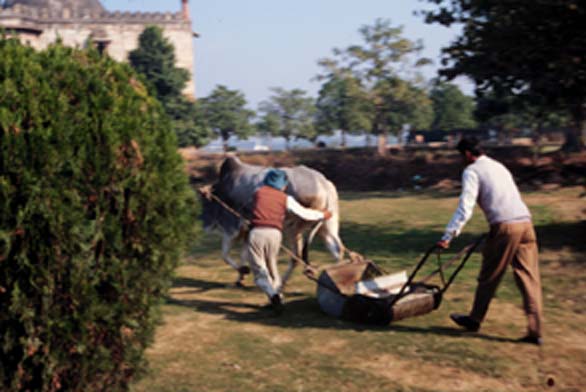
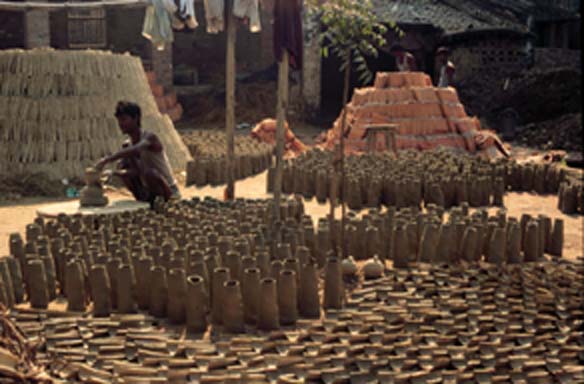
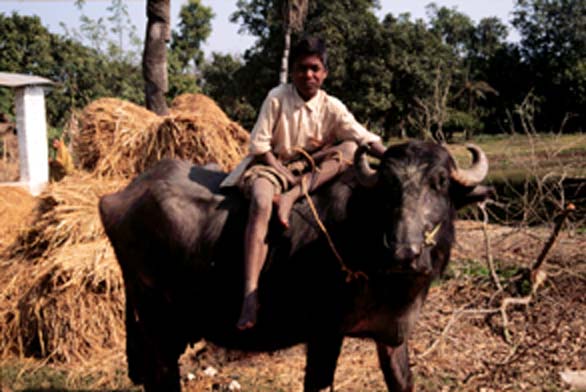
Within the caste of
Shudra there are many different groups, e.g.Barhi
(carpenters), Malis (gardeners), potters or Dhobi (washermen).
Each one of these groups performs a service. Their specific service is a
birthright and is somewhat similar to unions in the U.S. Duties range from
making furniture to building houses.
Harijan
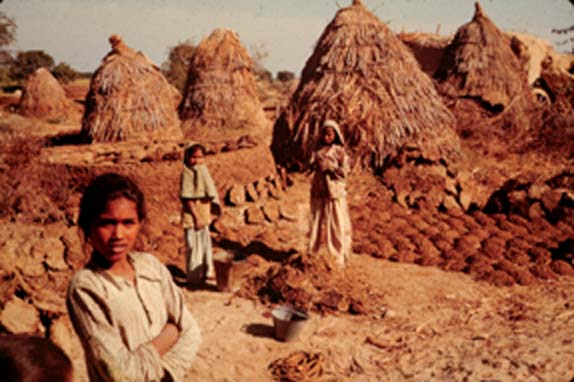
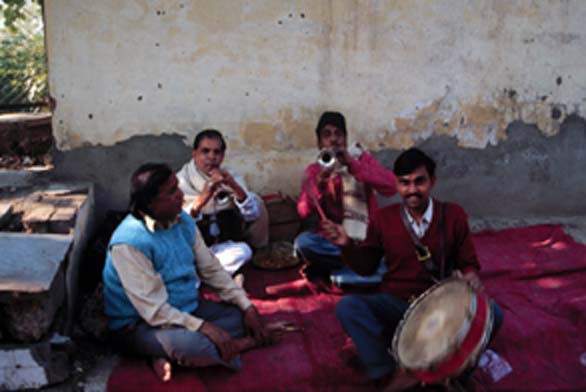
These little girls
are members of the lowest caste in the heirarchy. They are a part of what used
to be known as the untouchables. They were called untouchables because people
belived that they were so dirty that they were not fit to be touched by other
people in higher castes. Their jobs involve doing most of the cleaning, or what
we might call "dirty work." The name for them later changed from untouchables to
Harijans, which means god's children. Recently this caste would rather be
reffered to as Dalit, which means oppressed. In this particular picture the
girls are making dung patties. The dung from cows are taken and made into
patties and set out to dry (as you can see the rows of them), these patties are
then used to be burned as fuel or for heat. Though it is the Harijans that have
the task of making the patties, many other people from other castes benefit from
them.
In India musicians are part of the lowest caste. They are Harijans, too. Though
their music is enjoyed by many, the act of playing some of these instruments is
considered to be unclean. The saliva that is being blown into the horns is
thought to be very unhygenic, therefor not fit for people in higher castes to
play these instruments.